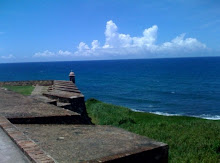The following list includes herbs that are commonly grown or easily found

Aloe Vera
This grows wild in arid regions of Europe, America, and Africa. It will not tolerate frost, but can be cultivated as an indoor plant in northerly regions. Personally, I find it rather ugly, buts its healing powers are very effective in the treatment of sunburn and other minor burns. The gel extruded when the leaves are cut can be applied to all sorts of wounds. It forms a protective layer, encouraging skin regeneration. When ingested, aloe vera is thought to be an effective intestinal cleanser. In this case, it is best to buy ready-made preparations from a reputable source. Aloe vera is also used in hand creams and shampoo.
Aaron's Rod (Verbascum thapsus)
Also know as great mullein, this grows widely in Europe and North America. It is used to treat urinary tract and kidney infections, and also to ease catarrh. Gather the flowering tops of the plant in summer and dry them. They can be made into cold compress that can be used as as anti-inflammatory dressing for wounds and stings, or into a calming tea.
Allheal (Prunella vulgaris)
This plant, also known as self-heal, woundwort or sticklewort, grows wild throughout temperate regions of the world and is easy to establish. Allheal is useful for treating sore throats and inflammations of the mouth, but its history is rich and varied. It has been used to treat ailments from quinsy to diphtheria, and wounds caused by careless handling of farming tools.
Basil (Ocimum basilicum)
The name of this popular herb is derived from the Greek Basilikon photon, which translates as "kingly herb." Cultivated for over 2,000 years, it originated in India, and was introduced to Mediterranean countries via the spice routes. Its medicinal uses are limited, but its oil is said to combat mental fatigue, and vinegar flavored by its leaves can be added to bathwater as an antiseptic. Its main use, however, is in salads and cooking. The leaves aid digestion as well as adding exotic flavor. The juice of basil leaves rubbed on skin acts as an insect repellent.
Celery (Apium graveolens)
Although more commonly known as a salad vegetable, celery stems have a calming effect on the cut and are helpful in the detoxification of the kidneys. Eaten raw, celery has a beneficial effect on arthritis.
Chamomile (Matricaria chamomilla)
A lovely, low-growing plant, chamomile resembles a daisy. Collect and dry the flowers from June to August. Chamomile is commonly used for its sedative properties, but it also relieves morning sickness, hemorrhoids, mastitis, eczema, and hay fever. When planted in close proximity to ailing plants, chamomile is reputed to help in their recovery.
Cinnamon (Cinnamomum zeylanicum)
A spice rather than an herb, cinnamon comes from the bark of the Cinnamomum verum tree, native to Sri Lanka and southern India. Its strong flavor is due to the essential oil that makes up 1 percent of its composition. Principally employed in cooking, cinnamon is also used as an insect repellent, to ease the symptoms of colds, and to aid digestive problems; but use it sparingly.
Cloves (Syzgium aromaticum)
Cloves, also, are a spice rather than an herb. They have extraordinary healing and pain-relieving powers, and medicinally no other substance has been found to equal their efficacy in relieving toothache. They are also used as a local antiseptic. Lesser known is the effect of cloves on relieving nausea-two drops of the essential oil in water are said to stop vomiting. Cloves stuck into an orange are traditionally used to repel moths.
Comfrey (Symphytum officinale)
Also known as Saracen's comfrey. Mainly used in poultices to heal wounds and reduce bruising, comfrey is also used in the treatment of athlete's foot and mastitis. It leaves contain allantoin, an agent that stimulates healthy tissue formation, which probably explains why it is often used in the manufacture of skin-softening cosmetics.
Coriander (Coriandrum sativum)
A native of southern Europe and the Middle East, coriander, also called cilantro, was brought to northern Europe by the Romans, who used it with cumin and vinegar as a preservative. Easily grown from seed in light, well-drained soil, coriander thrives in a sunny position and has many culinary uses. Medicinally, coriander leaves aid digestion and stimulate appetite. The dried seeds can be applied in a poultice to relieve joints.










No comments:
Post a Comment